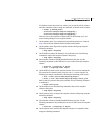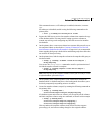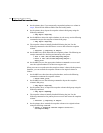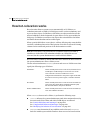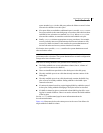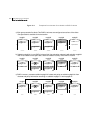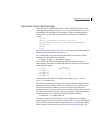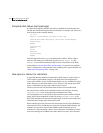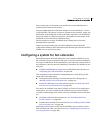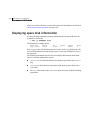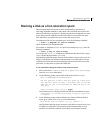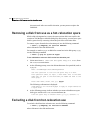
381Administering hot-relocation
How hot-relocation works
spares (marked spare) in the disk group where the failure occurred. It then
relocates the subdisks to use this space.
■ If no spare disks are available or additional space is needed, vxrelocd uses
free space on disks in the same disk group, except those disks that have been
excluded for hot-relocation use (marked nohotuse). When vxrelocd has
relocated the subdisks, it reattaches each relocated subdisk to its plex.
■ Finally, vxrelocd initiates appropriate recovery procedures. For example,
recovery includes mirror resynchronization for mirrored volumes or data
recovery for RAID-5 volumes. It also notifies the system administrator of
the hot-relocation and recovery actions that have been taken.
If relocation is not possible,
vxrelocd notifies the system administrator and
takes no further action.
Note: Hot-relocation does not guarantee the same layout of data or the same
performance after relocation. The system administrator can make configuration
changes after hot-relocation occurs.
Relocation of failing subdisks is not possible in the following cases:
■ The failing subdisks are on non-redundant volumes (that is, volumes of
types other than mirrored or RAID-5).
■ There are insufficient spare disks or free disk space in the disk group.
■ The only available space is on a disk that already contains a mirror of the
failing plex.
■ The only available space is on a disk that already contains the RAID-5 log
plex or one of its healthy subdisks. Failing subdisks in the RAID-5 plex
cannot be relocated.
■ If a mirrored volume has a dirty region logging (DRL) log subdisk as part of
its data plex, failing subdisks belonging to that plex cannot be relocated.
■ If a RAID-5 volume log plex or a mirrored volume DRL log plex fails, a new
log plex is created elsewhere. There is no need to relocate the failed subdisks
of the log plex.
See the
vxrelocd(1M) manual page for more information about the
hot-relocation daemon.
Figure 12-1 illustrates the hot-relocation process in the case of the failure of a
single subdisk of a RAID-5 volume.



